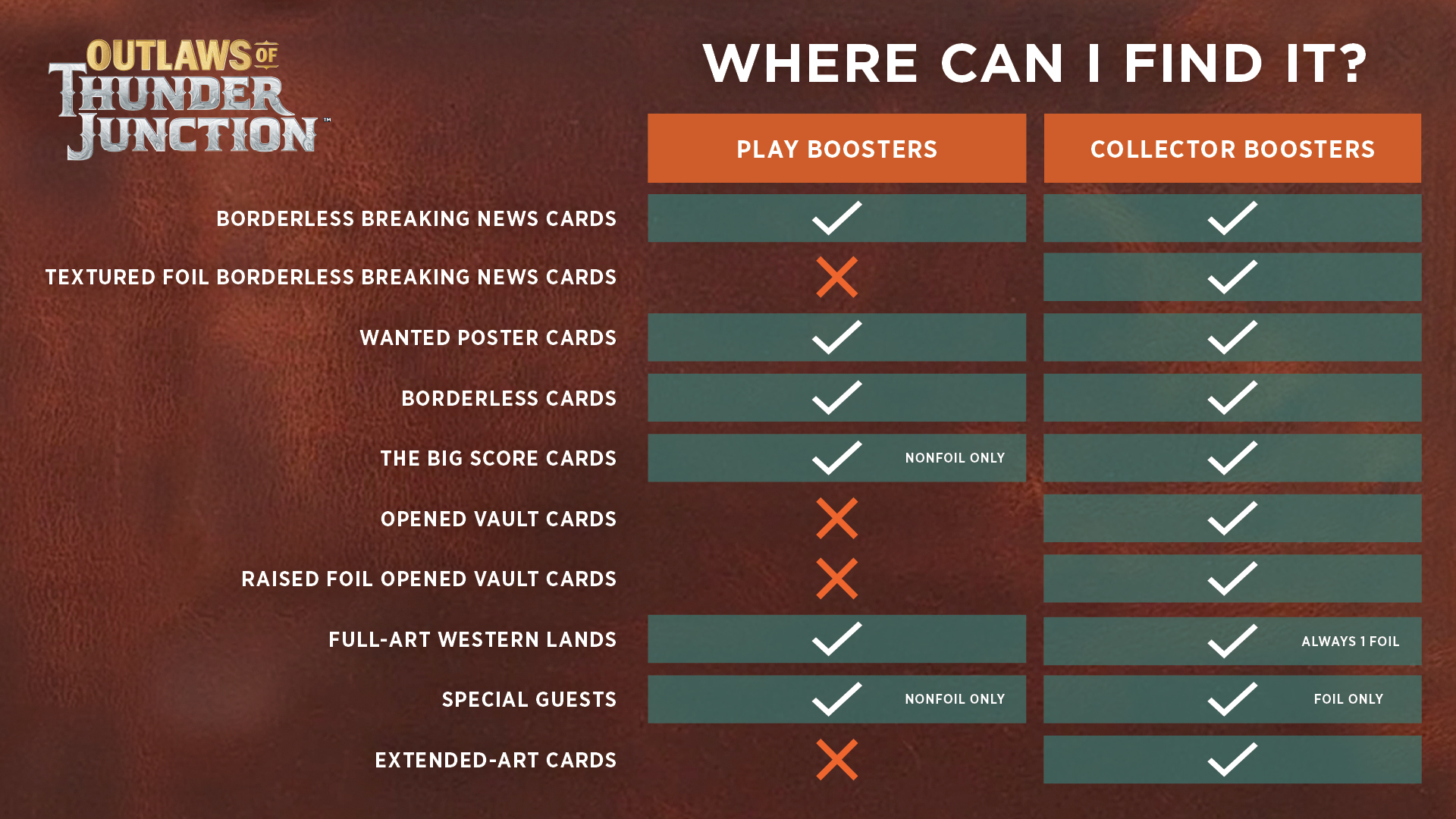MTG Outlaws of Thunder Junction subsets explained: legality, alternate art, and boosters
You might be an outlaw, but your cards gotta be legal

Magic: The Gathering's newest set might have some players just a little confused on the issue of legality. As it turns out, MTG Outlaws of Thunder Junction's legality won't be as cut and dry as it has been with prior releases.
With MTG Outlaws of Thunder Junction, you might find yourself preoccupied with the set's Wild West setting or its fun new mechanics that allow your creatures to ride giant toads. Me too, that's totally understandable.
However, one thing that can easily escape your attention is that that the set actually consists of five distinct subsets. Each of these subsets have their own code, symbol, and rulings regarding their legality in different formats. While getting to grips with all this can be a tad tricky, we're here to break it down real simple-like.
MTG Outlaws of Thunder Junction subsets explained

Outlaws of Thunder Junction (OTJ)
This is the main event and is what makes up the majority of the set. Think brand-new cards with 'wanted poster' showcase art treatments, extended art, borderless art, and default art. You should come across plenty of OTJ in both kinds of booster.
Outlaws of Thunder Junction (OTJ) is a Standard-legal set and its cards are also suitable for play in Sealed and Draft formats when drawn from Play Boosters.
Outlaws of Thunder Junction Commander (OTC)
Cards from Outlaws of Thunder Junction Commander (OTC) include those in the four Outlaws of Thunder Junction Commander decks: Grand Larceny, Desert Bloom, Most Wanted, and Quick Fire.
Of course, OTC is playable in Commander formats but it's also Legacy- and Vintage-legal.
Breaking News (OTP)
The Breaking News (OTP) subset represents some of the best Crimes you can commit on the battlefield of Magic: The Gathering. That is to say, there are plenty of reprints of cards which directly target your opponents, their permanents, their lands, or their spells.
OTP cards are Commander-, Legacy-, and Vintage-legal. They can also be played in Draft and Sealed.
The Big Score (BIG)
The Big Score (BIG) is a set of cards showing the mythical contents of the Fomori vault of Thunder Junction. This includes treasures like Artifacts and Equipments but Creatures too. Alongside textured and untextured foils, you also have the chance of drawing some very swanky-looking raised foils.
BIG is a Standard-legal set and its cards are also playable in Sealed and Drafted formats.
Special Guests (SPG)
Special Guests (SPG) are a class of reprint which delivers art and flavor text suited to the wider set. For example, we've already seen some of the Outlaws of Thunder Junction Special Guest cards in the form of a cowboy-hat-sporting Notion Thief and Port Razer.
SPG cards are legal in the Commander, Legacy, Vintage, Draft, and Sealed formats.
| Header Cell - Column 0 | Standard | Commander | Legacy | Vintage | Draft/Sealed |
|---|---|---|---|---|---|
| OTJ | ✅ | ✅ | ✅ | ✅ | ✅ |
| OTC | ❌ | ✅ | ✅ | ✅ | ❌ |
| OTJ | ❌ | ✅ | ✅ | ✅ | ✅ |
| BIG | ✅ | ✅ | ✅ | ✅ | ✅ |
| SPG | ❌ | ✅ | ✅ | ✅ | ✅ |

If you're on the look out for more for tabletop gaming fun, why not check out our list of the best board games? If you're into something more roleplay-heavy, give one of the best D&D books a try.
Weekly digests, tales from the communities you love, and more

Abigail used to be a Tabletop & Merch writer at Gamesradar+ but has now spread her wings as a freelancer. She carries at least one Magic: The Gathering deck in her backpack at all times and always spends far too long writing her D&D character backstory. She’s a lover of all things cute, creepy, and creepy-cute.


